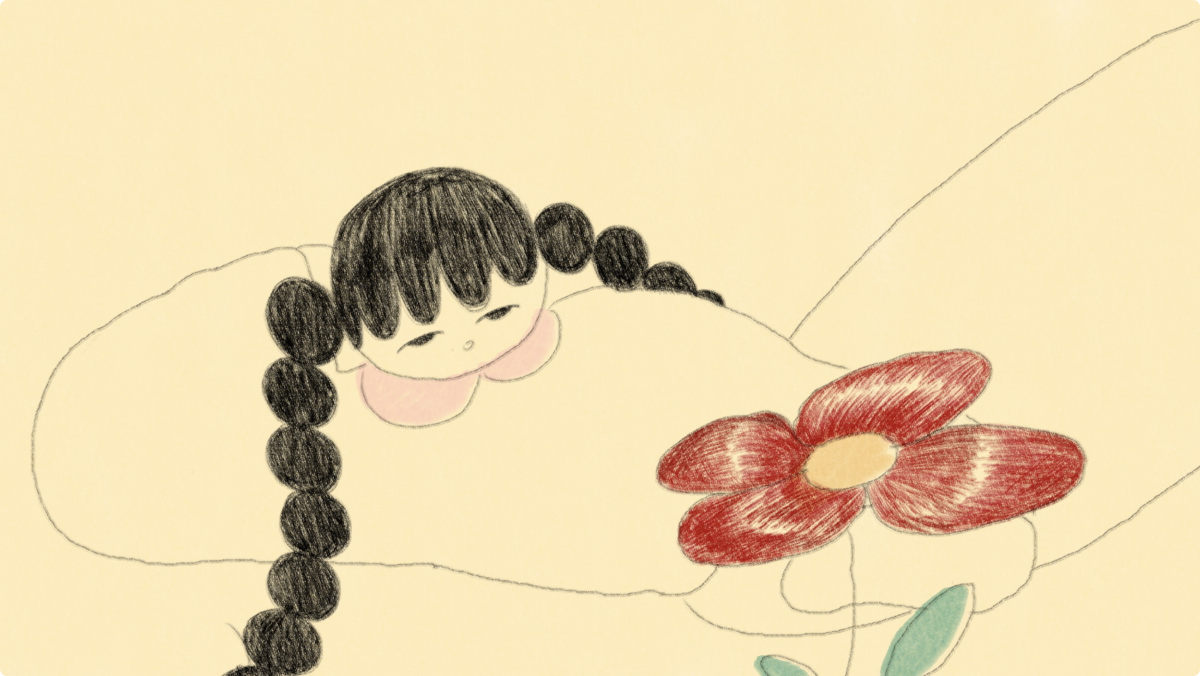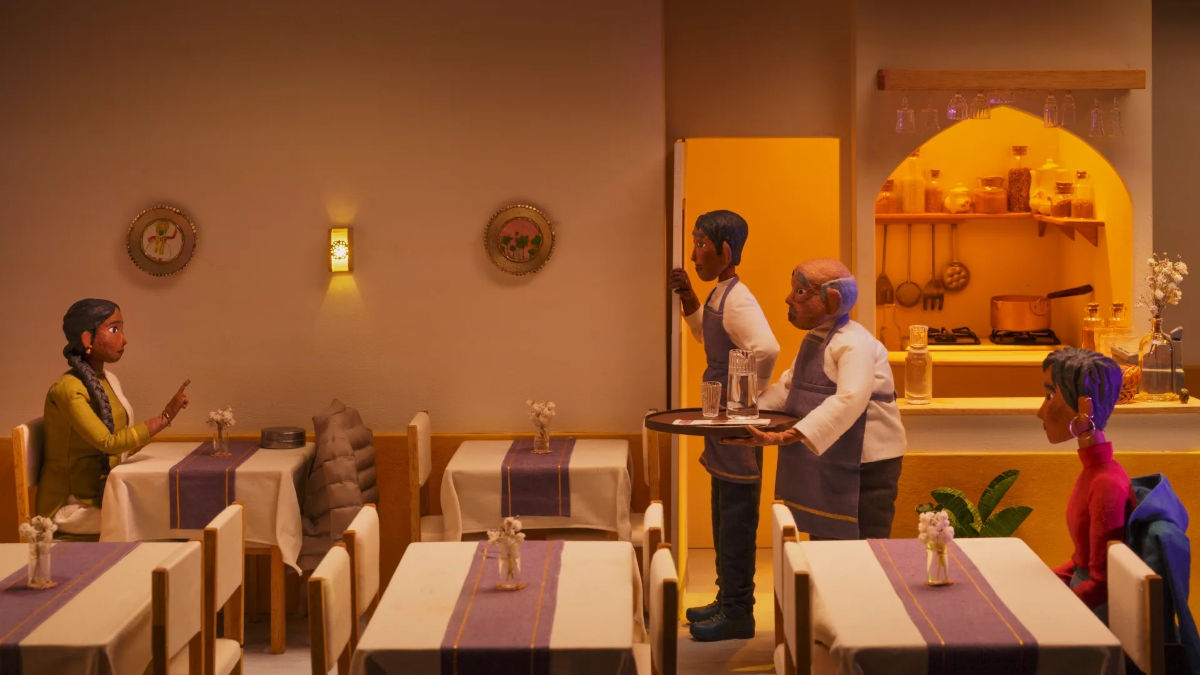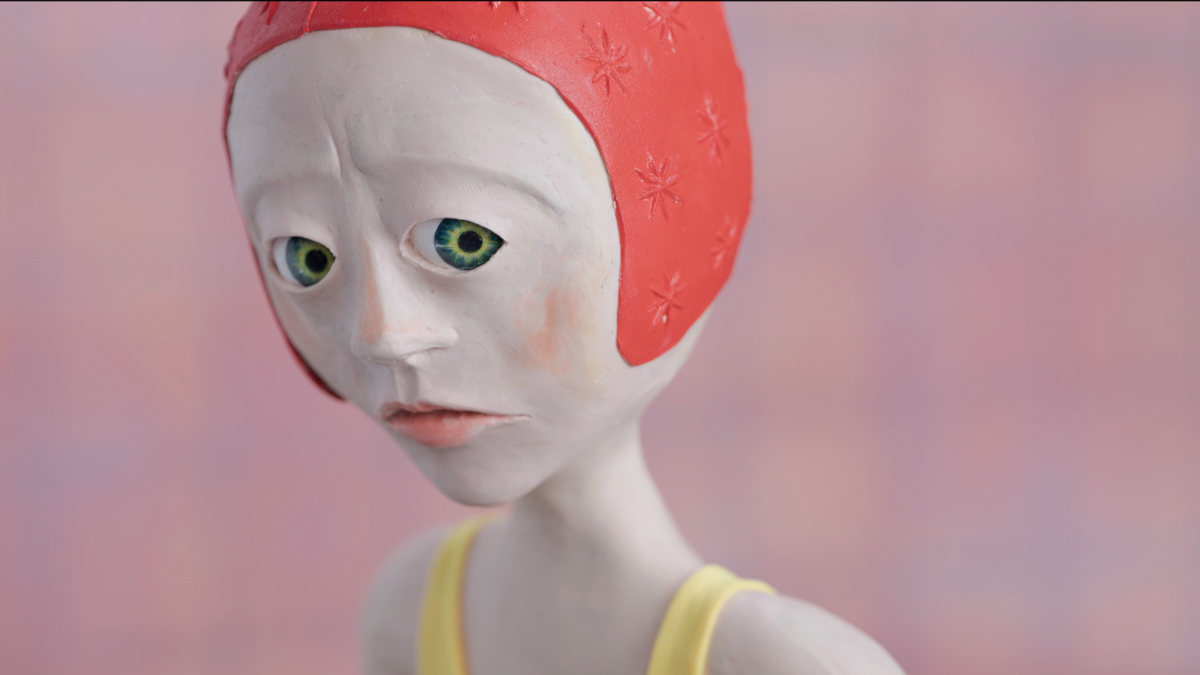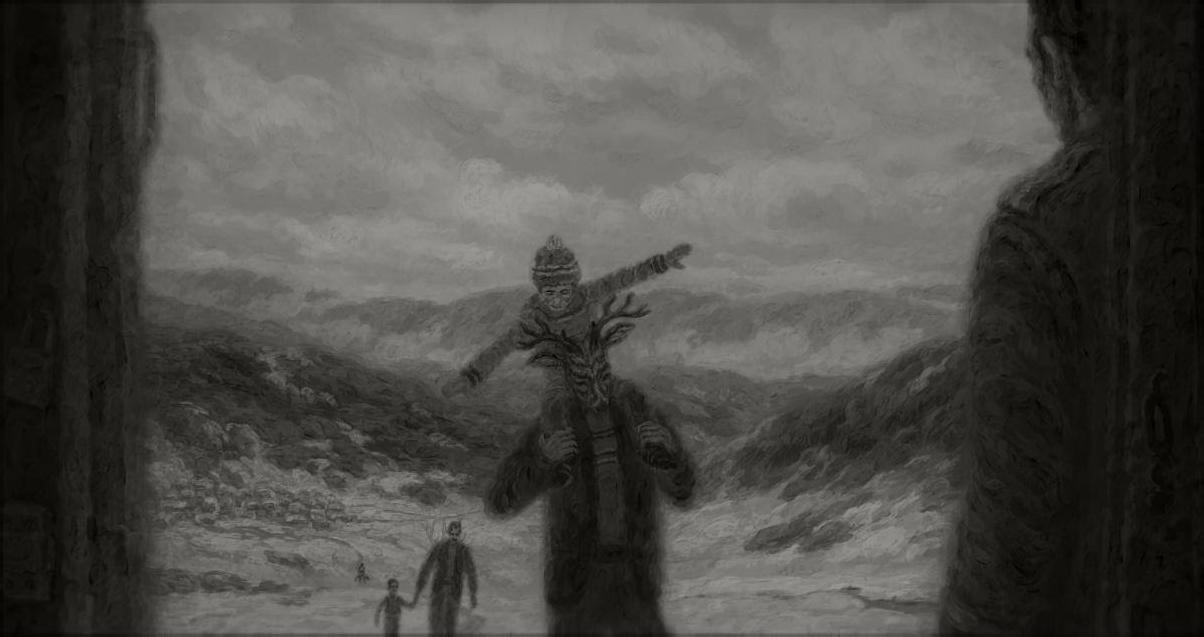Independent Animation Shorts
Ties by Dina Velikovskaya
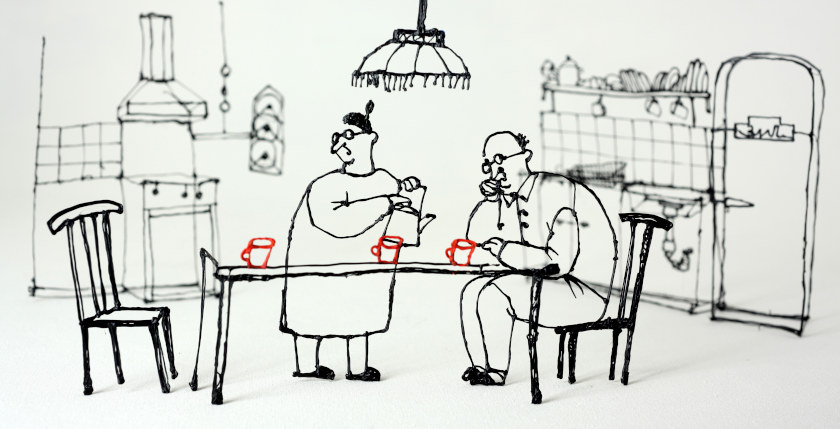
A young woman leaves the parental home to see the world. But the world of her parents is so tightly connected with her that by leaving, she puts it at risk. It turns out that this connection can be also destructive.
German-based Russian animation director Dina Velikovskaya, being an animation director since 2011 (her previous short Kukutschka was also featured at Zippy Frames), made her heartfelt Ties has won a number of awards (Stop Motion Montreal, Fantoche, DOK Leipzig, Animayo Festival), and made a great festival round, before finally premiering online.
We talked with the director on the occasion of the film's online premiere:
ZF: Was there any specific instance that led you to work on the Ties film? Was it something personal, something you heard/saw?
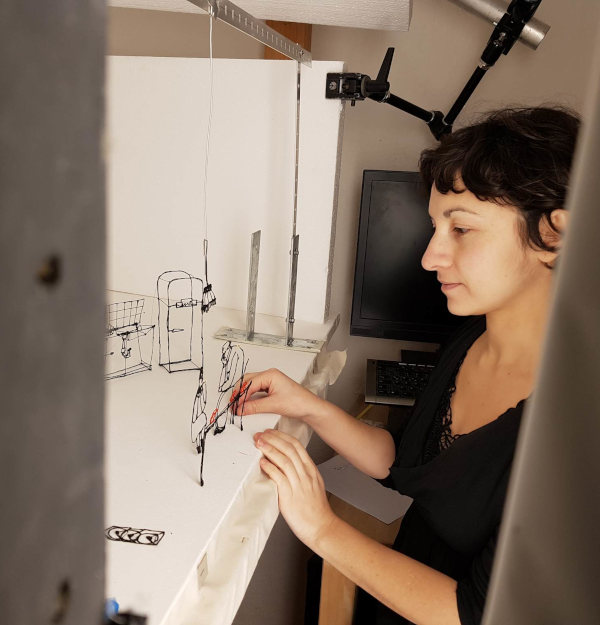 DV: The impulse for the film was my move from Russia to Germany, and the incomprehensible state between me and my parents established afterwards. Despite the fact that we talked almost every day via video calls, we were more distant than ever, not only physically but also emotionally. It was a very difficult time for me and for them. It was very hard for me to get through to them. I wanted to explain that I will not disappear from their lives, that our connection will not be interrupted.
DV: The impulse for the film was my move from Russia to Germany, and the incomprehensible state between me and my parents established afterwards. Despite the fact that we talked almost every day via video calls, we were more distant than ever, not only physically but also emotionally. It was a very difficult time for me and for them. It was very hard for me to get through to them. I wanted to explain that I will not disappear from their lives, that our connection will not be interrupted.
I was upset and could not find the way out of this situation. At this time, an image came to my mind – “a young woman is hooked with a thread from her skirt to a fence of a house, the girl leaves and the fence opens up like a knitting and disappears together with the a tree near the house and the house itself. Sounds of the city disappear along with the objects. This was the very beginning picture that turned into a movie.
Watch Ties by Dina Velikovskaya
ZF: How did you visualize the scenes? They unfold like a chain and a continuous thread, but I was wondering how scheduled this was. Did you have a complete script and storyboard?
DV: Indeed, the chain of events taking place in the film was clear almost from the very beginning. But this fixed structure (the young woman flies away) made the storyboarding process difficult. There was not a moment of pause, no place for calm scenes. Things happen very fast, one action leads to another. Everything had to be destroyed at the speed of a flying plane. The structure of the film doesn’t not give much room for maneuvers.
The line of the young woman did not change a lot from the first version of the storyboard, it was all clear. The part of the parents was the one that I had to change again and again, I needed to find this moments of calmness where I could show their emotions, their affection for their daughter. I had to cut a lot of tender scenes that just didn't fit in to the fast tempo of the film.
But after the storyboard and animatic were finished, I didn’t change anything, because the technique in which the film is made does not allow improvisation.
ZF: How difficult was it to make Ties in terms of production? Was it easy to find funding, and to get collaborators along the way?
DV: There were difficulties in finding funding in Germany. We received rejection after rejection from all the German funds. But it was impossible to shoot only on the Russian budget, since half of the team and the shooting itself were in Germany. In the end, the film was supported by two German producers, who were able to find the missing funds. The film is a collaboration of three studios one Russian – Studio “Pchela” and Cine-Litte Production and SMPL from Germany.
ZF: I understand you used a 3D pen for the drawing. Can you say a little bit more about the animating process? I guess it might have been fascinating and challenging at the same time.
DV: The technique is the combination of the wire objects and 3d pen drawn figures, that look like digitally drawn; the most interesting thing I see in this technique is that drawings are materialized in our world thanks to 3D pen. They stand in space and react to it like ordinary objects. At distance, they blur out of focus, they have a thickness and react on light. But most importantly, they cast shadows, which makes them real.
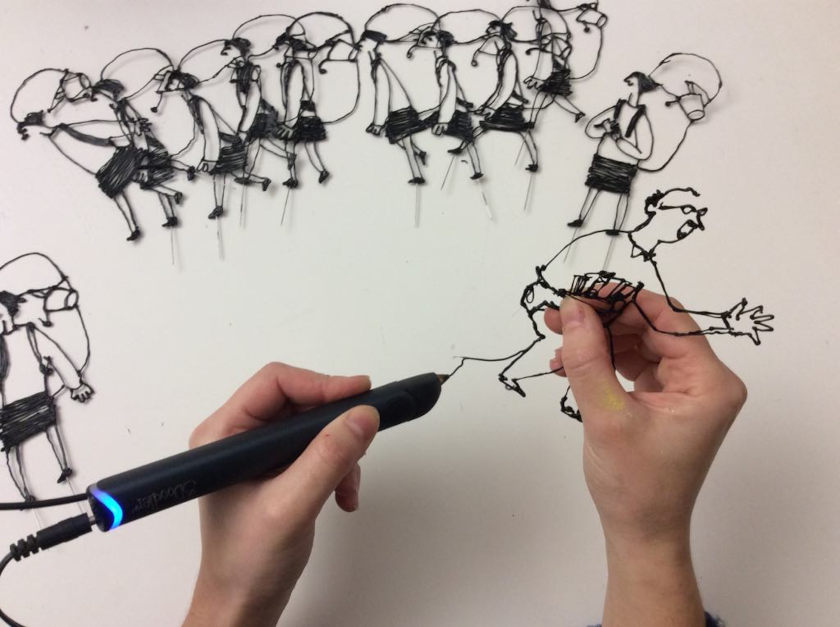
At the same time, they have all the advantages of a drawing - plasticity, lightness, expressiveness, which only a drawing can give. The characters look absolutely identical to the sketches on paper I made - and at the same time they are well combined with wire objects that are getting destroyed in front of our eyes. If I were to make the whole film in hand-drawn technique (which was my plan at the beginning), this effect of realistic destruction of objects would not have happened. On the other hand, if I had made the characters out of wire, I wouldn't have been able to make them come alive as they did - thanks to the excellent work of the drawn animators, who worked on the film.
As for the technical part of the process. All character animation was done in 2d digital drawn animation technique and then outlined with 3D pens. This pen works like a glue gun; it melts plastic, which hardens so quickly that it is possible to draw in the air. The result was sets of plastic flat figures. Each figurine has got it’s number. After that, I filmed them figure after figure in a stop-motion set, along with wire objects.
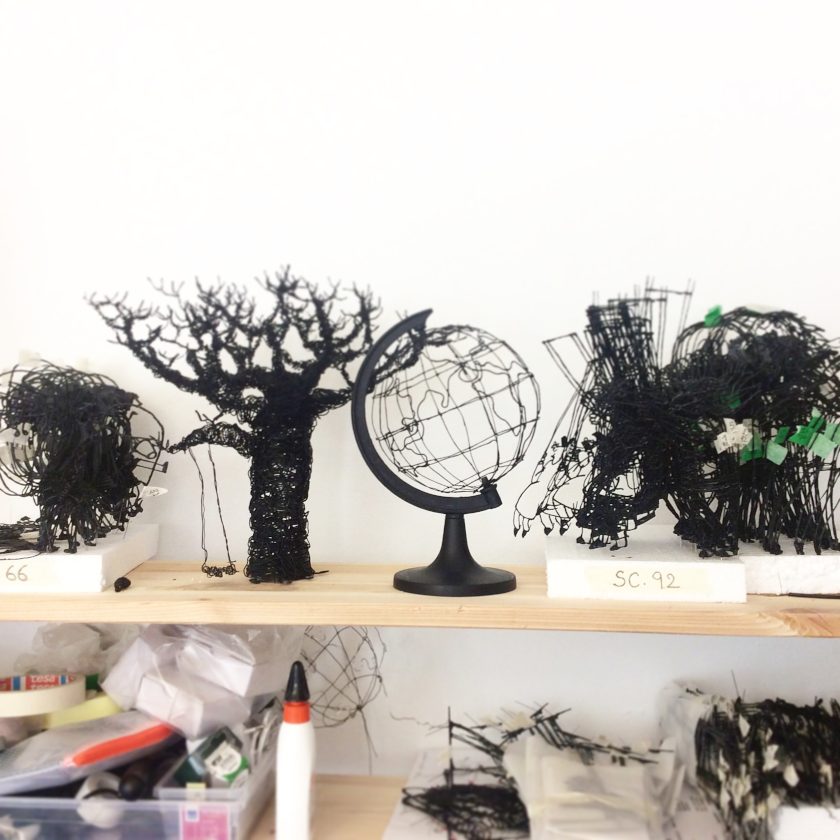

I like experimenting with new techniques and enjoyed jumping into this experiment. Although I thought that the 3d pen part would be the problematic part, it turned out that working with wire was the most risky. I had to fight gravity.
Watch the Making of Ties:
ZF: Your film is in black-and-white, but has elements of color in it. Can you tell us more about it?
DV: When we came up with this technique, the problem of transparency opened up. Characters and objects are not filled, and when they intersect each other, there are too many lines overlapping each other. We were looking for a solution. We tried different options, but the most elegant solution was to add a few colours.
ZF: Your Ties comes immediately after your Kukutschka puppet film. There is another family (parent and child) story there. What is the difference between the two, and what draws you to these stories in general?
DV: My film ideas come when I have an urgent problem. The problem is brewing and growing. Many go to a doctor - in this case, I'm making a film. Of course, there is a connection between these films as well as with the one before "About a mother". I view my films as a diary. Quite time-consuming diary, but well describing what happens at one or another point in my life. Often I have to go deep into my own wounds in order to find the seed for planting a future film. I'm sure there are much healthier ways to make films.

Ties differs from 'Kukuschka' in that I am completely on the side of the young woman. In 'Kukuschka', the feeling of guilt toward the child covers me so much, that I do nothing but searching for an excuse in it. There is no sense of guilt in 'Ties;. Only a wish to tell that every person has the right to go his own way, that this is how life works and the connection between close people is intangible, and therefore cannot be destroyed by distance.
ZF: The girl going abroad makes it easier for your film to develop. What would have happened if the girl just went to a different neighborhood? Would you have a different film?
DV: Interesting idea! I would like to make another film about it. I was so sure that the young woman has to fly, because I flew, that I did not even think about other options. It would have been easier to include pauses and moments of calm into this kind of plot, which I missed so much because of the high speed of the flying plain. I don't know if this would be a different film. The idea and the message would still be the same. Only events would be different.

Dina Velikovskaya is now working on another short animation film for children. She also has plans for a distinct film in her so-called 'the family diary series' she'd like to continue.
Film Review (Vassilis Kroustallis)
It's not easy to get untied, and the lovable film by Dina Velikovskaya proves the point. With character sketches easy to engage with, and threads that look like wired communication, it builds up a network of characters (a daughter and her parents) who need to be together -no matter what. Cleverly escalating the tension, moving through familiar objects (the first to go is the telephone) to the clothing itself, it attests how our family life continue to shape our future -even when we think we're far away. With a crescendo of sounds that leads to a comic catastrophe, Ties gives a welcome resolution to a situation that could otherwise be both painful and repressive. A sweet animated film about letting go.
Credits
Ties (2019, 7' 40'')
Director, Artdesign, Script - Dina Velikovskaya | Production - Studio Pchela, Florian Grolig, Cine-Litte | Animation - Nadya Fedotova, Dina Velikovskaya | Sound + Music - Artem Fadeev | Camera - Björn Ulrich | Founded by FFA, Stiftung Zurückgeben + Russian Ministry of Culture
About Dina Velikovskaya
Dina Velikovskaya is an animation filmmaker. Was born in Moscow in 1984. After graduating from animation department of Russian State University of Cinematography (VGIK) in 2011, she continued her studies at High Animation School-Studio “SHAR” (Moscow). During her studies she made two films that brought her international recognition: “My Strange Grandfather”2011 and “About a Mother” 2015. This film and her latest film “Kukuschka”2016 have been screened worldwide and received a lot of awards and nominations. In 2018 Dina Velikovskaya became a member of The Academy of Motion Picture Arts and Sciences.





